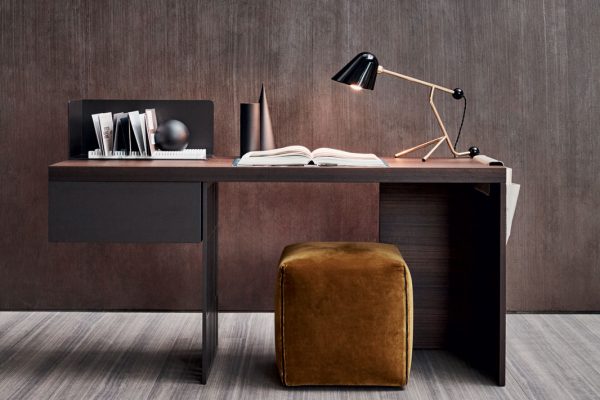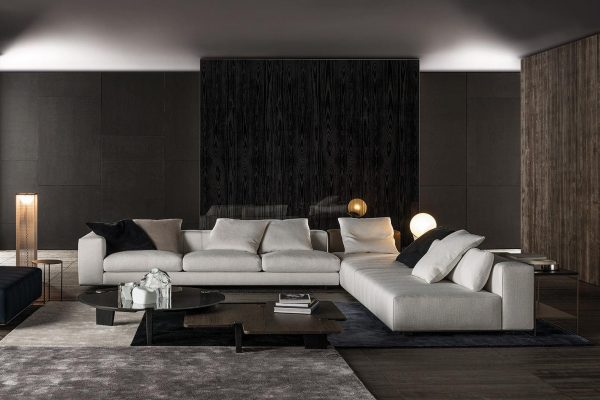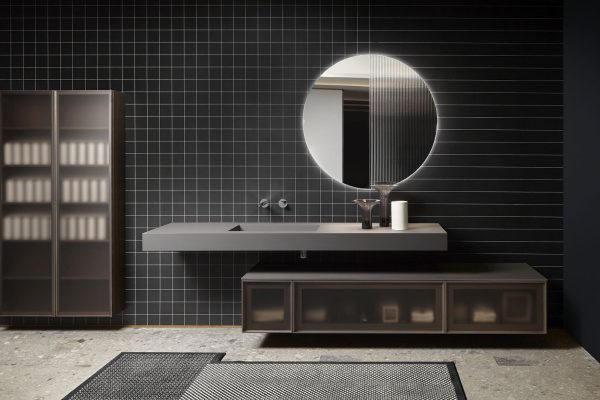Knoll tables, sinuous shapes and refined materials
Soft forms and precious materials combined in an unprecedented way. Designer tables lend sophistication to rooms while remaining a furniture symbol of conviviality. Those on the market today represent the evolutions that have taken place in the field of design and changes in the approach to living, and respond to the need for multifunctionality without sacrificing a refined and customizable aesthetic. Lightweight and sculptural structures, precious and textured tops, the new tables give identity, form and volume to the space they occupy. Some of the most iconic models, which have made international design history, bear the signature of the American company Knoll, famous for its clean, essential, comfortable, elegant lines, and for having many pieces from its catalog displayed within the permanent design collection at the Museum of Modern Art in New York. Knoll has created models over the years that respond to the changing needs of space and living, adapting from collection to collection. The peculiarity of its tables is that they combine experimentation in materials with sinuous, innovative shapes created by some of the most representative designers of the 20th century, such as Frank Gehry, Cini Boeri, Warren Platner, and
Eero Saarinen
.
Face Off, sculptural table in glass and woven wood
Inspired by the surprising strength of the apple crates he played on as a child, Frank Gehry created these tables, accompanied by bentwood chairs. Gehry’s architecture draws its strength from the sculptural approach with which he expanded the vocabulary of buildings. Bringing this same concept to furniture, he built the entire collection with woven maple strips. Ribbon designs transcend conventions of style and focus, like the great modernists, on the essential challenge of deriving form from function. While maple wood woven and assembled with an extra-strong gluing system provides the solid base, the top, on the other hand, is available in tempered glass or white laminate with a solid edge. A mix of materials that makes this table perfect for embellishing rooms almost like a contemporary sculpture.
Platner Coffee Table, harmonious lines inspired by bundles of wheat
The Platner table, designed in 1966 by U.S. architect Warren Platner, has an elegant and harmonious design with authenticity and strong character. It combines the series’ signature metal structure, inspired by bundles of wheat, with a surface with a fine finish. With its delicate, soft shapes, it captured the curved features that were beginning to infiltrate the vocabulary of the modern, marking a momentous change in style.
Iconic and decorative, the pieces in the series are created through the welding of hundreds of rods of inflected steel rod for circular frames, which becomes simultaneously structure and ornament.
In the living room of the home as in a contract environment, it stands out for the ease with which it integrates with the rest of the furnishings to which it is juxtaposed, without ever losing sophistication and contemporaneity.
Tulip, modern and futuristic table: a timeless icon
“I wanted to clean up the houses from the mess of all those legs.” The year was 1955, and from this insight ofFinnish architect and designer Eero Saarinen came a piece of furniture that became anicon of modern design: the Tulip table, from Knoll’s Pedestal collection. A shape reminiscent of the stem of a tulip, which opens at the end to support the corolla, or top. It is not only the clean, essential and pure lines that are innovative, but also the materials. The circular base was made of cast aluminum because, with the technologies of the time, plastic was not strong enough to hold the weight. The shell is made of molded and reinforced fiberglass, and the upholstery, in Rilsan, can be black, white or platinum, which goes with the top – round or oval – in laminate, marble or veneer. Its modern, futuristic appeal has also captivated the press, so much so that in ’56 Time devoted its cover to Saarinen, elevating him to the greatest architect of his time.
Balances and geometries in glass and steel for the Lunario table
An interplay of weights and volumes that fit together in a perfectly balanced geometry. Lunario, the table created for Knoll in 1973 by designer Cini Boeri is characterized by its elegant and out-of-the-ordinary shape. It is a table top that carries with it all the characteristics of the 1970s: the oval shape and the meticulous workmanship of the glass, which enhances one of the concepts of those times, transparency. The shelf, made of clear tempered glass, does not even conceal the steel plate base, which gets rid of centrality to almost give a sense of imbalance through invisible fastening.



